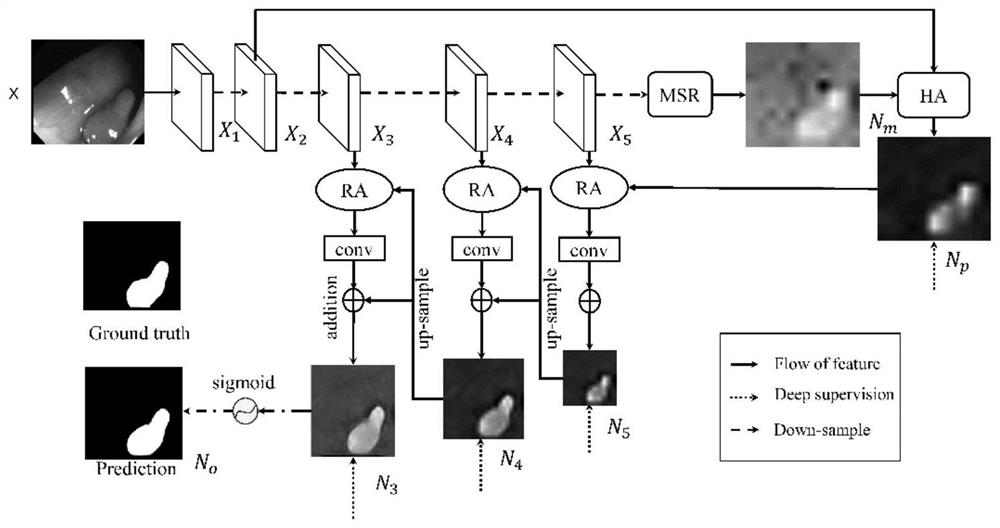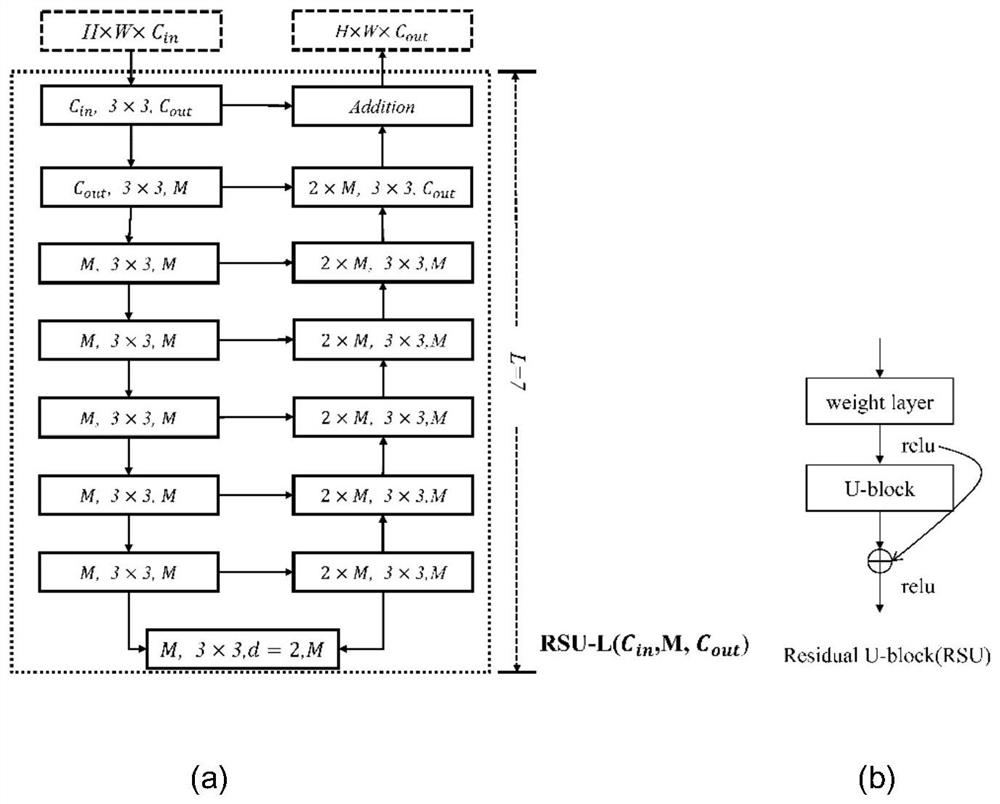Intestinal tract lesion segmentation method combining multi-scale U-shaped residual encoder and overall reverse attention mechanism
An attention mechanism and multi-scale technology, applied in the field of medical image processing, can solve the problems of low resolution of feature maps and lack of contrast information, and achieve the effect of reducing the loss of fine details, accurate segmentation effect, and good practical engineering application value
- Summary
- Abstract
- Description
- Claims
- Application Information
AI Technical Summary
Problems solved by technology
Method used
Image
Examples
Embodiment Construction
[0025] In order to clarify the purpose, technical solutions and advantages of the present invention, the present invention will be further described in detail below in conjunction with specific embodiments and accompanying drawings.
[0026] refer to Figure 1 to Figure 6 , an intestinal lesion segmentation method based on the combination of a multi-scale U-shaped residual encoder and an overall reverse attention mechanism, including the following steps:
[0027] Step 1, input data set X={x 1 ,x 2 ,...,x n}, where X represents the input samples in the data set, and x n ∈R 352 ×352 , n represents the number of samples, and the multi-scale U-shaped residual encoder is used as the backbone network to encode the input intestinal lesion image and extract image features. Each level of the backbone network is filled with RSU. By configuring the depth L parameter of RSU, multi-scale features of any spatial resolution can be extracted from the input feature map. RSU extracts mult...
PUM
 Login to View More
Login to View More Abstract
Description
Claims
Application Information
 Login to View More
Login to View More - R&D
- Intellectual Property
- Life Sciences
- Materials
- Tech Scout
- Unparalleled Data Quality
- Higher Quality Content
- 60% Fewer Hallucinations
Browse by: Latest US Patents, China's latest patents, Technical Efficacy Thesaurus, Application Domain, Technology Topic, Popular Technical Reports.
© 2025 PatSnap. All rights reserved.Legal|Privacy policy|Modern Slavery Act Transparency Statement|Sitemap|About US| Contact US: help@patsnap.com



